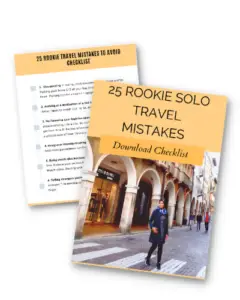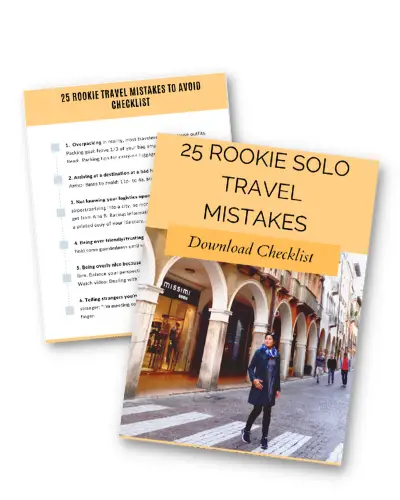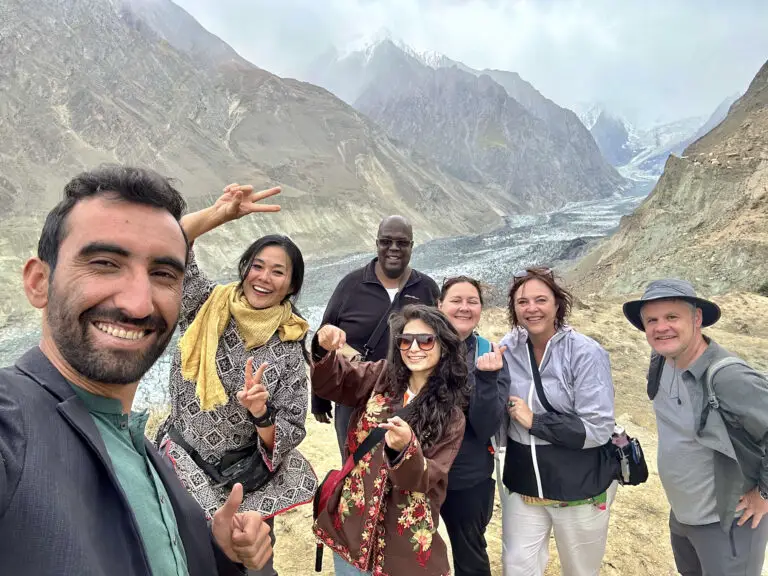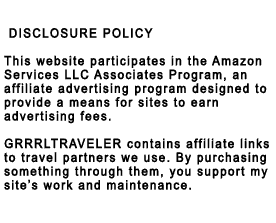Last Updated on January 12, 2024 by Christine Kaaloa
Many of you have been watching my videos where I am eating street food. You’re wondering how to eat street food without getting sick. In this post, i’m sharing food safety tips to avoid getting sick while traveling.
First of all, I have gotten sick (twice!), but let me get to that later in the video, because I have more to share on that. I wanted to share street food myth busters and food safety tips for how to eat street food without getting sick. Watch the video for more detail.
How to eat street food without getting sick
Table of Contents: 14 Street Food Safety Tips to Avoid Getting Sick While Traveling
I love eating street food everywhere I go. But as a solo traveler, I have to be cautious about it. I want to avoid getting sick eating street food.
There are at least 187 countries where visitors should avoid drinking tap water. It’s not because they are all unsafe, but sometimes, they might have properties are bodies are not accustomed to. Americans may feel alien to this, but if you think of it, even Los Angeles has bad tap water conditions.
Additionally, there are countries where the food preparation and practices may not be hygienic or ideal (i.e. food is left sitting out in the hot sun for hours or attracts flies.) and can invite food poisoning, disrupted bowel movement or a parasite.
Street Food Safety Tips: 14 Tips for Not Getting Sick While Traveling
14 Street Food Safety Tips to Avoid Getting Sick While Traveling
Here’s a list of food safety tips and guidelines set into memory before traveling. There are Dos and Don’ts and to help your gastronomic journey flow smoothly.
Street Food Safety Conditions to AVOID
Let’s start with the things to avoid in your street food safety choices. Yep, you’re in a country where you’ve learned travelers can get sick from drinking the tap water.
1. Avoid tap water while traveling
Steer clear of tap water in all its forms – drinking, ice cubes, even brushing teeth. Invest in bottled water, but be wary of scams in some countries, like India where bottled water is sometimes re-sealed with glue. Consider portable UV filters or purification tablets for longer stays. UV filter devices treat and kill the bacteria before you ingest it. I recommend a SteriPEN Freedom (see my review), Lifestraw or boiling wand.
2. Avoid foods washed in tap water
Skip raw salads, due to either, unfiltered water or unclean handling. Opt for fruits you can peel or veggies cooked on the spot. In a pinch, wash fruits and vegetables with bottled water or purifying solutions. Again, avoid tap water while traveling.
3. Avoid the ice.
Not all ice is created equal. Stick to reputable restaurants and vendors known for using filtered water. Popular international chains like McDonalds, Subway and Starbucks can be safe as they have international food safety regulations. But only if you know they use filtered water to make their ice or not.
Ask locals about “good ice” and learn to recognize safe shapes. With eating Thai street food, locals know that the ice which comes in the shape of tubular holes, is made with filtered water. So yes, in Thailand, you can drink that Thai iced coffee to cool you down.
4. Aim for fly-free foods
Avoid food that’s been sitting out for hours or attracting pesky flies. Freshness is key. If unsure, choose cooked dishes prepared right before your eyes.
5. Avoid meat that’s been sitting out for a while.
Some countries have butchers with shops outdoors and exposed to the streets. Be cautious of unrefrigerated meat. Consider vegetarian options like lentil stews or bean curries. If meat is your must-have, choose stalls with proper storage and opt for freshly cooked dishes.
Read Survival tips for Vegetarian Travelers
This post contains affiliate links. I have travel insurance on all my trips (get a quote). If you want to find an insurance plan based on your needs & budget, use this trip insurance finder tool . Read my guide on trip insurance options for U.S. Travelers.
.
5. Don’t let your guard down.
One tip on how to eat street food without getting sick is to observe vendor hygiene. Look for clean clothes, gloves are ideal, and clean utensils. Avoid stalls with questionable practices or unclean workspaces. It can be hard to decipher where street food vendors are concerned. Trust your gut!
How to Eat Street Food Safely
6. Fruits and vegetables that are peelable
Embrace peelable fruits like oranges, pineapples, bananas, and avocados. They make great snacks on a train ride.
Carry a portable knife or ask vendors to slice for you. Remember, even peeled fruits can be contaminated, so wash them with safe water if possible.
7. Hot meals that are prepared on the spot.
Seek out hot meals – the heat eliminates bacteria and ensures proper cooking. Explore grilled skewers, stir-fries, and steaming soups. Bonus points for interactive cooking shows where you can witness the magic unfold!
Tip: I do a pinky finger test and slyly dip my pinky into the food, especially soups!
8. Do the food tours and cooking classes
Food tours and cooking classes are more than just delicious experiences. They offer cultural insights, hygiene awareness, and a chance to taste a variety of dishes without committing to a full meal. Plus, you’ll learn to navigate menus and identify safe options with confidence.
With food tours, you get tour guides who direct you to safe foods. For instance, travel blogs on Nepal tend to steer you away from trying street food because refrigeration is not a common practice. I went with Backstreet Academy food tours, so I could safely try local street foods and it was an incredible and informative experience.
With Cooking classes, you learn about ingredients from a local household and learning to cook from a local can feel both meaningful and culturally enriching.
Tip: Getyourguide is a legitimate place to find good food tours and cooking classes.
tour See my food reviews for recommendations.
Join one of my group adventures!
Dive into local culture, food and off-beaten-path gems without the stress
9. Eat homemade yogurts.
Yogurt is a traveler’s best friend. It’s packed with probiotics, good bacteria that boost gut health and fight traveler’s diarrhea. Pack some from home or indulge in local yogurt versions. Probiotic supplements are another handy option.
Tip: Buy probiotic supplements before you travel. In some countries- like Southeast Asia- they aren’t cheap.
Food Safety Tips while Traveling: Always Observe
The great thing about street food is that you can see it being prepared in front of your eyes. In some regard, eating street food can be as 50-50 safe as eating in a cafe… except a lot of local vendors don’t always practice good hygiene. But my point being, with street food, you can watch how they prepare your food.
10. Watch how vendors prepare food
A reason I love eating street food is that I can see the ingredients going into the food. As a vegetarian, this is more informative to me than a dish of mysterious ingredients arriving at my table. Watch to see if the vendor has hygienic practices.
11. Do visit popular street food stalls
Follow the locals! Stalls with high customer turnover are a good sign. Freshly prepared food is less likely to harbor bacteria, and locals know the hidden gems with the best hygiene practices.
12. Restaurants don’t mean better.
Don’t assume restaurants are immune to food safety issues. Buffets, undercooked food, and reused ingredients can pose risks.
Ask about food preparation and ingredients before committing to a potentially tummy-turning meal. In Thailand, I got sick off buffet food at a Chinese restaurant while on a tour in Thailand.
How to Deal with Getting Sick Abroad
Ok, so it happened. Getting sick from street food is inevitable when you travel a lot and get overly confident. All travelers are human. It’s not easy to travel with “safety tips” 24 hours/7 days a week- there are bound to be slip-ups. Don’t sweat it. If it happens, it happens. Consider yourself wiser in the future.
13. Be Prepared, Not Scared
Getting sick happens. Pack an essential first-aid kit with anti-diarrheals, rehydration salts, and pain relievers. Research local pharmacies and their medication availability. Remember, sometimes a quick dose of antibiotics can be a lifesaver.
The first time I got sick in India, it took the edge off of my travel virginity. I found I was able to cope with getting sick while traveling solo, wasn’t bad. I took myself to the hospital in a taxi, took the meds, did a followup check up in Bangkok later. When the second time came around, I was like– I got this down!
Take your Cipro (for the stomach bugs) and pack an anti-diarrheal like immodium D. If you forgot them, check out the local pharmacy. In the U.S., you need a prescription to buy Cipro, but in countries like India and Thailand, they might be dispensed by the local pharmacy. If they don’t feel like they’re working or you feel weak and very unwell, take yourself immediately to the doctor or the local hospital.
Read how to deal with getting sick abroad.
14. Travel Insurance is Your Safety Net
Don’t underestimate the power of travel insurance. It can cover medical emergencies, lost luggage, and even trip cancellations due to illness. Choose a reputable plan that suits your needs and budget. Remember, an ounce of prevention is worth a pound of cure, but having insurance can provide peace of mind in case things go south.
I never leave home without travel insurance that covers travel theft and adventure activities that basic plans don’t. Here’s a trip insurance finder tool to find a plan that matches your budget.
Do you practice these street food safety tips? Do you know how to eat street food without getting sick? How do you avoid getting sick eating street food?


















